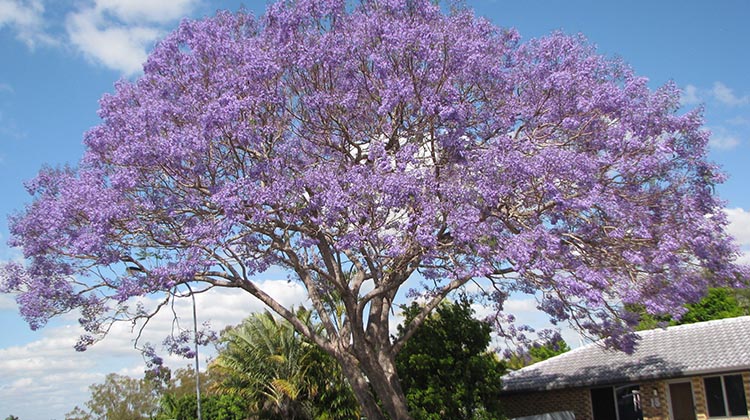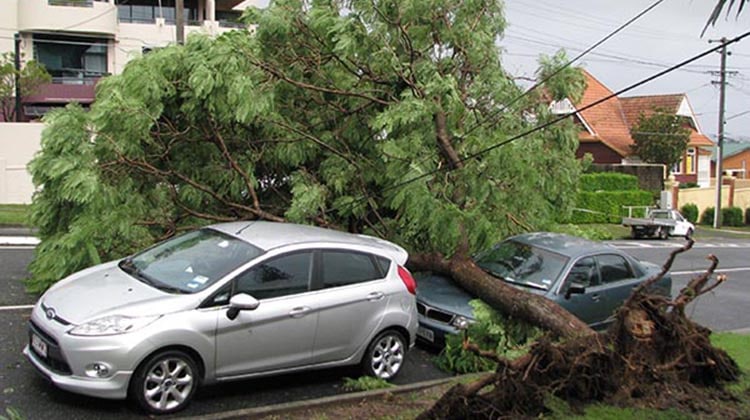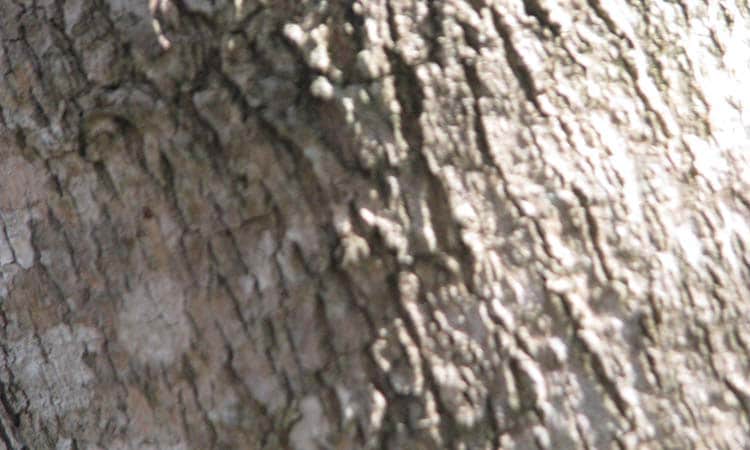Jacaranda mimosafolia
Family: Bignoniaceae Origin: South America
While Jacaranda is the name of a genus of 49 species of trees and shrubs, in Brisbane Jacaranda usually refers to Jacaranda mimosafolia. They have been grown in Brisbane since popularized by the original botanic gardens in the 1800’s. Goodna even has an annual Jacaranda festival, making it even harder for a certain ecologically-friendly arborist to convince people to have these weeds removed.
 It is prolific, which is one of its main problems. That is, it has become naturalised in areas around Ipswich and so made it onto Weeds Australia’s undesirable list. Ipswich council is largely to blame, having used them as street trees. It’s another lesson to favour native Australia trees.
It is prolific, which is one of its main problems. That is, it has become naturalised in areas around Ipswich and so made it onto Weeds Australia’s undesirable list. Ipswich council is largely to blame, having used them as street trees. It’s another lesson to favour native Australia trees.
If your Jacaranda is struggling, make sure it has full sun and good drainage. They need both. Also look for root damage by neighbouring houses or public works. Their roots travel for quite some distance and damage they suffer will be reflected in the visible part of the tree.
On the other hand, it could be something else. Brisbane residents might remember the media attention given to the death of a number of Jacarandas in New Farm park. While the consultant arborist (‘Ecca’) put it down to their age, I suggest they probably fell prey to a soil borne organism. Bear in mind the short time between their deaths as well as their proximity to the Brisbane River. I’m thinking they may susceptible to a fungus. Again, they need good drainage.
Considering their ‘undesirable’ status, removal is certainly an option for currently-grown Jacarandas in Brisbane. Pruning should be done by an arborist as incorrect pruning causes deadwood in these species which may pose a danger later.
They also tend to split down inclusions of bark, so removing weight from heavy scaffold branches improves their safety. At the same time, branches must be pruned back to leaders to avoid watersprouts forming. Don Burke recommends against pruning them at all to avoid watersprouts however an arborist can prune Jacarandas while avoiding their formation completely.
Below is a photo of a Jacaranda that uprooted in Highgate Hill after heavy rain.
Arboriculture
Trunk
The foliage of Jacarandas is very similar to Poincianas so they can be difficult to tell apart, except for their bark. Jacarandas have a vertically ridged bark with a soft feel, while Poincianas have smooth bark.
Growth form
Tree to around 12 metres in height and 10 metre diametre canopy. Strongly decurrent, they have a quite rounded canopy. Jacarandas are low forking and occasionally exhibit multitrunk clumping.
Flowers
Jacarandas put on an impressive flowering display starting around November each year. There is a saying at the University of Queensland (where streets are lined with Jacarandas) that one should start studying when Jacarandas start to bloom, but when the Poincianas start flowering it’s too late.
Flower structure
Jacarandas have tubular flowers to 50mm long in panicles growing upto 300mm in terminal clusters. Flowering is profuse and can cover the whole tree. After the flowers expire they tend to blanket the ground below.
Wood
Grain is quite straight and the wood cuts easily being soft yet not pithy. It is used in wood turning though is considered to soft for furniture or structural purposes. As part of our reuse of timber project, we often have Jacaranda timber available for wood turners: please comment below to enquire.
Management
Environmental impact
Jacarandas are invading bushland outside of Ipswich. They have become naturalized and are considered a threat to native species. In turn, this affects wildlife that depend on native flora for food. Jacarandas should not be propogated and consideration given to removing trees near bushland.
Jacaranda problems
Jacaranda flowers attract insects, especially bees. This can, according to a vet, lead to dogs and cats being stung. She sees an increase in bee stings in animals from Jacaranda flowers, so raking the flowers is recommended from November to late March.
https://youtu.be/17z_YCtak2A


